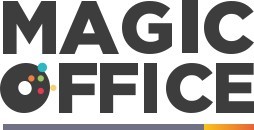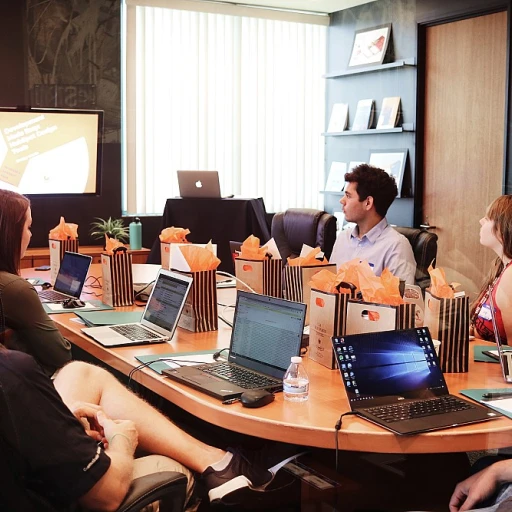
Understanding Workforce Dynamics in the Arabian Emirates
Recognizing the Unique Workforce Landscape
Understanding workforce dynamics in the Arabian Emirates starts with recognizing the unique aspects of this vibrant region. The social, cultural, and economic factors play a critical role in shaping how companies manage their employees. With a diverse pool of talent from various parts of the world, workplace monitoring becomes an essential part of streamlining efficiency and maintaining productivity.
The workforce in the Arabian Emirates is known for being both diverse and dynamic. Companies in the region need to adapt their employee monitoring strategies to optimally harness this diversity and drive employee engagement. The challenge is to align the distinct characteristics of the workforce with effective monitoring practices, ensuring that productivity is maximized without compromising employee satisfaction.
Emphasizing Employee Productivity
Various sectors in the Arabian Emirates require tailored approaches to boost employee productivity. In industries where remote work and flexible schedules are common, traditional management techniques might not be effective. This calls for innovative employee monitoring solutions that can provide real-time insights, helping management to better coordinate team efforts and recognize areas for improvement.
Monitoring tools play a crucial role in addressing these needs, offering features such as time tracking, work progress updates, and performance metrics. By employing suitable workforce monitoring techniques, companies can strike a balance between overseeing employee activity and respecting their privacy, ultimately uplifting overall employee performance.
The Role of Technological Advancements
Technological advancements have revolutionized how businesses conduct workforce monitoring. From advanced monitoring software and management tools to comprehensive data analysis systems, the options are abundant. These tools not only help in tracking employee performance but also provide insights into employee engagement levels and remote work effectiveness. Sophisticated data management systems allow for the analysis of employee activities, helping managers make well-informed decisions that enhance business operations.
Technological Tools for Workforce Monitoring
Leveraging Modern Technology for Workforce Supervision
In the rapidly evolving business landscape of the Arabian Emirates, employing high-tech monitoring tools has become indispensable. Utilizing state-of-the-art software for employee productivity is a key step in aligning with this technological progression. There are numerous management tools available specifically designed to track employee activity and workplace monitoring.
Many companies have integrated sophisticated workforce management solutions that provide real-time insights into employee performance and remote work monitoring. Management software comes enhanced with features such as time tracking and project management, making it easier for teams to maintain productivity even from a distance. This is particularly crucial in the Emirates, where remote employees are often part of a geographically diverse workforce.
To further enhance employee engagement and performance management, leveraging service order management tools can significantly streamline organizational processes. This integration assists in data collection and analysis, thereby improving work management strategies.
In conclusion, the selection of appropriate technological monitoring software directly impacts business outcomes. When tailored to specific workforce needs, these tools not only help in enhancing employee productivity but also in optimizing overall company efficiency.
Balancing Privacy and Efficiency
Balancing Workforce Transparency and Confidentiality
Effective management involves a delicate balance between fostering productivity and respecting employee privacy. In the bustling business environment of the Arabian Emirates, these objectives must coexist harmoniously. Balancing privacy and efficiency is essential to maintaining trust and employee engagement while maximizing productivity. Companies often introduce monitoring software as part of their workforce management strategy. Such tools come equipped with features like time tracking and real-time activity monitoring, presenting opportunities to elevate employee efficiency. However, it is crucial to clearly communicate to the workforce how these tools will be used. Transparency increases trust, thereby improving employee engagement and ensuring better collaboration within teams. Remote work magnifies these concerns, as managers may feel compelled to track employee performance more closely. Monitoring software, including management tools and systems, offers insights into employee activity and helps track employee contributions to projects. Nonetheless, it is essential to focus on tracking performance rather than constantly surveilling every employee’s actions. Businesses are urged to implement opt-in monitoring systems, where data collection methodologies are explicitly defined. This approach assists companies in understanding employee concerns and finding middle ground. For further insights into effectively balancing these dynamics, experts recommend enhancing the efficiency of workforce monitoring through efficient management tools available here.Tailoring Monitoring Techniques to Industry Needs
Adapting Monitoring Strategies to Different Industries
In the diverse economic landscape of the Arabian Emirates, each industry presents unique challenges and opportunities when it comes to workforce monitoring. Understanding these nuances is essential to tailor the right employee monitoring tools effectively. For industries such as technology and finance, where data security and compliance are paramount, robust monitoring software with advanced tracking features can help safeguard sensitive information. These tools not only track employee activity in real-time but also ensure that employee engagement remains high without compromising privacy. In sectors where remote work is prevalent, such as IT and media, companies often rely on comprehensive time tracking and management software to maintain employee productivity and streamline work processes. Conversely, in industries like construction or manufacturing—where the physical presence of a workforce is essential and on-site management is crucial—it may be more beneficial to focus on tools that enhance real-time employee performance and project management. By integrating these tools into their operations, businesses can boost productivity, improve team coordination, and ensure efficient workflow. Moreover, the realm of service-oriented businesses often requires monitoring techniques that emphasize customer interaction and service quality. Here, performance management systems that closely track employee productivity can significantly enhance service delivery. These systems offer insights into employee activities, helping managers track employee tasks efficiently and make informed decisions about workforce management. Adopting a comprehensive approach that incorporates the right combination of monitoring tools and management systems is key to enhancing business operations across varied industry sectors in the Arabian Emirates. This strategic tailoring of technology to fit industry needs not only boosts efficiency but also fosters an environment conducive to workforce engagement and innovation.Training and Development in Workforce Monitoring
Learning and Development for Workforce Monitoring Mastery
In the evolving landscape of workforce management within Arabian Emirate companies, training and development in employee monitoring stand as a crucial component. Ensuring that your team effectively utilizes monitoring software requires strategic investment in both learning and development initiatives. Implementing robust training programs can equip employees with the necessary skills to leverage monitoring tools, enhancing employee productivity and efficiency. Such programs should focus on:- Understanding Monitoring Tools: Employees need comprehensive training on how to utilize time tracking and management tools effectively to improve their workflow. This includes understanding the different features of monitoring software and how these tools can track employee activity in real time.
- Balancing Surveillance with Engagement: Training should also address how workplace monitoring can be conducted without intruding on employee engagement. Employees should learn the importance of data privacy and the role of monitoring in improving their performance and supporting their professional growth.
- Tailoring to Specific Roles: Different industries and roles within a company might require specialized monitoring techniques. Tailored training can help employees from various departments optimize the usage of real-time management systems that fit their unique needs.
- Remote Work Adaptability: With the rise of remote work, training should emphasize remote employee management. Employees need to adapt monitoring methodologies to ensure smooth performance management and to address unique challenges posed by a dispersed team.
- Utilizing Feedback for Improvement: Encourage a culture where feedback on monitoring practices is utilized to enhance both employee performance and the effectiveness of management systems.
Future Trends in Workforce Monitoring
The Evolving Landscape of Workforce Monitoring
The future of workforce monitoring in Arabian Emirate companies promises to be both challenging and exciting as new advancements continue to emerge. Companies must anticipate these changes and be prepared to adapt their strategies accordingly to ensure they remain competitive and compliant.
Integration of Artificial Intelligence
Artificial intelligence (AI) is poised to play a crucial role in workforce management, offering real-time insights into employee productivity, engagement, and performance. Companies in the Arabian Emirates are beginning to leverage AI capabilities to analyze large datasets, optimize employee activity, and identify trends that could impact workplace efficiency. AI-based monitoring tools can help predict potential issues and provide solutions before they escalate, ultimately enhancing employee performance.
Enhanced Data Analytics for Better Decision Making
Data-driven decision making is becoming more prevalent as businesses realize the benefits of using robust analytics. Continuous advancements in data processing offer greater accuracy in tracking employee activity, time management, and overall business performance. These improvements empower organization leaders to harness rich insights that drive better decision-making processes, leading to increased employee productivity and enhanced workforce outcomes.
Remote Work Monitoring
With the rise of remote work environments, there is a growing demand for comprehensive remote employee monitoring solutions. Modern monitoring software is designed to deliver seamless performance management across remote teams by tracking work engagement and output in real-time. These solutions must strike a balance between respecting employee privacy and gathering necessary data to maintain efficient workflows and meet company goals.
Customizable Monitoring Solutions
Customization will be key in the next wave of monitoring software, i.e., offering industry-specific features and tools tailored to diverse business needs. By providing flexible solutions that align with distinct industry requirements, companies can address unique challenges while bolstering workplace monitoring effectiveness.
Focus on Employee Engagement and Well-being
Finally, a future-oriented approach to workforce monitoring acknowledges the importance of employee engagement and well-being. Monitoring tools that support employee-centric features will foster a healthier work environment, contributing to heightened morale, lower employee turnover, and increased productivity.













